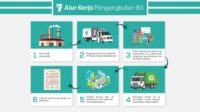Can you get disability if you own a business? It’s a complex question with no simple yes or no answer. The eligibility for disability benefits hinges on a variety of factors, not least of which is the nature of your business, your income, and the severity of your disability. This guide explores the intricacies of navigating the disability application process while maintaining business ownership, examining different business structures, income types, and the crucial documentation required to support your claim.
Understanding the interplay between business ownership and disability benefits requires careful consideration of several key aspects. The type of business (sole proprietorship, LLC, corporation) significantly influences how your income is assessed. Active versus passive income streams also play a critical role, as does the demonstrable impact of your disability on your ability to perform your business duties. Properly documenting your financial situation, including business valuations and income statements, is paramount to a successful application.
Business Ownership and Disability Benefits
Eligibility for disability benefits hinges on several factors, primarily the severity and duration of a disabling condition preventing substantial gainful activity (SGA). Business ownership adds a layer of complexity to this determination, as it introduces questions about income, work capacity, and the nature of the business itself. The specific impact of business ownership on eligibility varies significantly depending on the type of disability benefit program and the individual’s circumstances.
Eligibility Criteria for Disability Benefits
Generally, to qualify for disability benefits, an applicant must demonstrate a medically determinable physical or mental impairment preventing them from performing any substantial gainful activity (SGA). This impairment must be expected to last at least 12 months or result in death. The Social Security Administration (SSA), for example, uses a five-step sequential evaluation process to determine eligibility. This involves assessing the severity of the impairment, its impact on work capacity, and whether the individual meets the criteria for a listed impairment.
Impact of Business Ownership on Eligibility
Business ownership significantly impacts the disability determination process. The key issue is whether the business owner’s activities constitute “substantial gainful activity.” If the business generates income above the SGA threshold, it may be considered evidence that the individual is not disabled, regardless of their medical condition. Conversely, if the business is minimally profitable or operated primarily by others, it might not disqualify an applicant. The SSA will consider factors such as the amount of time spent working, the level of control exerted over the business, and the actual income generated.
Examples of Business Ownership and Disability Eligibility
Consider two scenarios. First, an individual owns a highly successful software company, working 40 hours a week and earning a substantial income. This individual would likely be deemed ineligible for disability benefits, even if they have a chronic illness. Second, an individual owns a small bakery, but due to their disability, primarily manages the business from home, delegating most tasks to employees, and earning income below the SGA threshold. This individual may still qualify for disability benefits, provided their medical condition meets the other eligibility criteria. The crucial factor is the level of involvement and the income generated, not the mere fact of business ownership.
Comparison of Disability Benefit Programs and Business Ownership, Can you get disability if you own a business
| Benefit Type | Ownership Impact | Income Thresholds | Additional Requirements |
|---|---|---|---|
| Social Security Disability Insurance (SSDI) | Income from business exceeding SGA threshold (currently $1,560 per month in 2024) may disqualify. Nature and extent of business involvement assessed. | Varies; generally aligned with SGA thresholds. Regular adjustments are made. | Medical evidence of disability; work history; inability to perform past relevant work. |
| Supplemental Security Income (SSI) | Income and resources from business considered; exceeding limits may disqualify. Stricter limits than SSDI. | Lower than SSDI; subject to frequent updates and state variations. | Financial need; medical evidence of disability; resource limits. |
| Long-Term Disability Insurance (Private) | Policy-specific; some policies exclude income from self-employment, while others consider it based on policy definitions and the individual’s level of participation. | Varies widely by policy; usually a percentage of pre-disability income. | Policy terms and conditions; evidence of disability meeting policy definition. |
| Workers’ Compensation | Generally, if the disability is work-related, business ownership doesn’t directly impact eligibility, though the nature of the injury and its impact on work capacity are central. | Varies by state and type of injury; typically covers medical expenses and lost wages. | Work-related injury or illness; employer’s responsibility for providing coverage. |
Types of Businesses and Their Impact
The structure of your business significantly impacts your eligibility for disability benefits. Different legal entities—sole proprietorships, LLCs, corporations—affect how your income is assessed and how the relationship between your work and your disability is evaluated. Understanding these differences is crucial for navigating the disability application process. This section explores the nuances of various business structures and their influence on disability benefit claims.
Business Structure and Disability Benefit Applications
The legal structure of your business directly influences how your income is reported and considered in a disability claim. A sole proprietorship, for instance, blends your personal and business finances. Your business income is directly tied to your personal income tax returns, making it straightforward for the disability agency to assess your earning capacity. In contrast, an LLC or corporation provides a degree of separation between your personal and business finances. While this separation offers some protection, it doesn’t necessarily shield your business income from scrutiny. The agency will still examine your financial records to determine your earning potential, even if those records are separate from your personal accounts. Corporations, with their more complex financial structures, often require more extensive documentation to demonstrate the impact of a disability on your business income.
Business Income and Disability Benefit Calculations
Business income plays a pivotal role in disability benefit calculations. The amount you earn, both actively and passively, directly influences the determination of your eligibility and the potential benefit amount. Agencies typically examine income from the past year or several years to establish a baseline. A consistent high income may suggest a greater capacity for work, even with a disability. Conversely, a demonstrable reduction in income due to a disability strengthens a claim. The method of calculating income varies depending on the specific agency and the type of benefit sought. However, the general principle remains consistent: higher income generally reduces benefit amounts or even disqualifies applicants.
Passive Income versus Active Income
The source of your business income—passive or active—also significantly impacts disability claims. Passive income, such as rental income or royalties, often carries less weight in determining eligibility than active income earned through direct work and involvement in the business. This is because passive income often requires less physical or mental exertion, while active income directly reflects your work capacity. For example, an individual with a disability who receives passive rental income might still be eligible for benefits if their active income, from a job requiring physical labor, is significantly reduced or eliminated due to the disability. However, someone solely reliant on passive income might face more challenges in demonstrating a substantial reduction in earning capacity.
Business Operations and Disability Claim Assessment
The nature of your business operations—active versus passive, employee versus independent contractor—influences how your disability claim is assessed. An individual actively managing a business, requiring significant physical or mental exertion, who can no longer perform those tasks due to a disability has a stronger claim than someone whose business operates passively. Similarly, an independent contractor with complete control over their work schedule and workload might face more scrutiny than an employee with a defined role and limited control. The agency will consider the level of control, the physical and mental demands of the business, and the extent to which the disability impairs the individual’s ability to perform those tasks. For instance, a lawyer with a debilitating illness who can no longer perform the mental tasks required of their job will have a much stronger case than a business owner who simply delegates their responsibilities to employees and receives passive income.
The Role of Business Income and Assets

Applying for disability benefits while owning a business presents unique challenges. The evaluation process considers not only your medical condition but also the financial aspects of your business, aiming to determine your true capacity for work and your dependence on benefits. This assessment focuses on whether your disability prevents you from performing substantial gainful activity (SGA), regardless of business ownership.
The valuation of a business is a crucial element in determining eligibility for disability benefits. The agency assessing your application will scrutinize your business’s financial records to understand its profitability and your role within it. A highly profitable business, indicating a significant income stream, may weigh against your claim, suggesting you are not truly disabled from working. Conversely, a failing or minimally profitable business might support your claim, demonstrating that your disability hinders your ability to maintain a sufficient income. The valuation isn’t simply about the total value of the business but also its current income generation capacity, reflecting your current ability to earn.
Business Valuation in Disability Benefit Applications
The valuation process typically involves a review of financial statements, including profit and loss statements, balance sheets, and tax returns. These documents provide a picture of the business’s financial health and your income derived from it. The agency may also consider the market value of the business, particularly if it’s a larger or established enterprise. Experts, such as business appraisers, may be consulted in complex cases to provide an objective valuation. The goal is to ascertain if your business income is sufficient to negate the need for disability benefits, or if your condition significantly impairs your ability to maintain this income. For example, a self-employed carpenter with a thriving business showing consistent high profits might face more scrutiny than a small shop owner struggling to make ends meet due to a debilitating illness affecting their ability to work.
Demonstrating Inability to Work Despite Business Ownership
Demonstrating an inability to work while owning a business requires a comprehensive approach. You need to convincingly connect your disability to a significant reduction in your ability to perform substantial gainful activity (SGA). This often involves presenting evidence of how your condition impacts your business operations, such as reduced work hours, delegation of responsibilities, reliance on family members, or decreased profitability. It’s crucial to show that your business’s current state is a direct consequence of your disability, not a pre-existing condition or unrelated factors. For example, an individual with a severe back injury owning a landscaping business might demonstrate reduced hours, reliance on hired help, and a drop in revenue compared to previous years.
Supporting Documentation for Disability Claims
Providing comprehensive documentation is vital. This should include detailed medical records, business financial statements, and evidence demonstrating the impact of your disability on your business. This could include letters from your doctor outlining your limitations, business tax returns, bank statements, profit and loss statements, and even testimonials from employees or clients illustrating the changes in your business operations.
Required Financial Documents
The application process usually requires a range of financial documents. This commonly includes:
- Personal tax returns (several years)
- Business tax returns (several years)
- Profit and loss statements (for the business)
- Balance sheets (for the business)
- Bank statements (personal and business)
- Loan documents (if applicable)
- Payroll records (if applicable)
- Business licenses and permits
These documents provide a comprehensive picture of your financial situation, both personal and business-related, allowing the agency to assess your need for disability benefits. Failure to provide complete and accurate financial documentation can significantly hinder your application.
Navigating the Application Process: Can You Get Disability If You Own A Business

Applying for disability benefits while owning a business presents unique challenges. The process requires meticulous documentation, a clear understanding of eligibility criteria, and the ability to effectively demonstrate the impact of your disability on your business operations. Failure to address these aspects thoroughly can significantly hinder your application’s success.
The application process for disability benefits, while complex, is generally similar across various agencies. However, the specific requirements and procedures may vary depending on your location and the specific disability program you’re applying to (e.g., Social Security Disability Insurance (SSDI) or Supplemental Security Income (SSI)). Understanding these nuances is crucial for a successful application.
Application Steps for Business Owners
The application process typically involves several key steps. First, you’ll need to gather comprehensive medical documentation supporting your disability claim. This should include detailed medical records, physician statements, and any relevant test results. Second, you will need to complete the application forms accurately and completely. Third, you’ll need to provide detailed information about your business, including financial records, tax returns, and a description of your daily business operations. Finally, you will likely need to attend an interview with a disability examiner. Throughout the entire process, maintain open communication with the agency handling your application.
Challenges Faced by Business Owners
Business owners often face unique challenges when applying for disability benefits. One common obstacle is demonstrating the extent to which their disability impacts their ability to perform their work. The agency may require substantial evidence illustrating how the disability affects the specific tasks involved in running the business. Another significant challenge is the perceived conflict between business ownership and disability. Some applicants may worry that their business ownership will be interpreted as evidence of their ability to work, even if their disability significantly limits their capacity. Furthermore, the need to provide detailed financial information about the business can be daunting, requiring significant time and effort to gather and organize. Finally, navigating the complex legal and bureaucratic processes involved can be overwhelming for individuals already dealing with a disability.
Step-by-Step Guide for Applicants
A successful application hinges on thorough preparation and meticulous documentation. This step-by-step guide Artikels key considerations for business owners:
- Gather Comprehensive Medical Evidence: Compile all relevant medical records, physician statements, and test results demonstrating the severity and impact of your disability. Focus on how your condition limits your ability to perform the essential functions of your business.
- Complete Application Forms Thoroughly: Accurately complete all application forms, providing detailed and specific information about your disability, its impact on your work, and your business operations. Avoid omissions or ambiguities.
- Document Business Operations: Provide detailed information about your business, including business plans, financial records (tax returns, profit and loss statements, bank statements), and a description of your daily responsibilities. Clearly articulate which tasks you can no longer perform due to your disability.
- Quantify the Impact on Business: Demonstrate the financial impact of your disability on your business. Provide evidence of decreased profits, increased expenses (e.g., hiring additional help), or other quantifiable consequences.
- Prepare for the Interview: Practice answering questions about your disability and its impact on your business. Prepare examples illustrating how your condition limits your ability to work. Bring all relevant documentation to the interview.
Communicating the Impact of Disability on Business Operations
Effectively communicating the impact of your disability on your business operations is crucial. Avoid vague statements; instead, use specific examples to illustrate how your condition limits your ability to perform essential tasks. For instance, if you own a restaurant, you might describe how your mobility issues prevent you from effectively managing the kitchen or interacting with customers. If you own a consulting firm, you might explain how your cognitive impairments affect your ability to analyze data or meet deadlines. Quantify the impact whenever possible, using financial records and other data to demonstrate the negative consequences of your disability on your business. Remember, the goal is to clearly and convincingly demonstrate that your disability prevents you from performing the essential functions of your business. Consider seeking professional assistance from a disability advocate or attorney to ensure your application is as strong as possible.
Legal and Financial Considerations
Claiming disability benefits while simultaneously owning and operating a business presents a complex interplay of legal and financial factors. Navigating this terrain requires a thorough understanding of the regulations governing disability benefits and the implications for business income and assets. Failure to do so can lead to penalties, benefit reductions, or even legal action.
The legal ramifications of claiming disability benefits while maintaining business ownership hinge on the definition of “disability” as defined by the relevant disability program (e.g., Social Security Disability Insurance (SSDI) or Supplemental Security Income (SSI)). These programs typically assess an individual’s ability to perform substantial gainful activity (SGA). The level of SGA varies by year and program. Maintaining a profitable business, even a small one, could be interpreted as engaging in SGA, potentially jeopardizing benefit eligibility. The key is demonstrating that the business activities do not contradict the claimant’s claimed disability. This often requires detailed documentation of limitations and how the business is structured to accommodate those limitations.
Tax Implications of Disability Benefits and Business Income
Receiving disability benefits and maintaining business income creates unique tax implications. Disability benefits themselves may be taxable depending on the source and the recipient’s overall income. Business income is always subject to self-employment taxes. Careful financial planning is crucial to manage these complexities. Strategies such as establishing a retirement plan, such as a SEP IRA or Solo 401(k), can help reduce tax liability on both business income and disability benefits. Moreover, consulting with a tax professional familiar with disability benefits and business taxation is essential for optimizing tax strategies and ensuring compliance. For example, a business owner receiving SSDI might be able to deduct certain business expenses, reducing their taxable income. Conversely, a significant increase in business profits might affect the amount of disability benefits received or even lead to a review of eligibility.
The Role of Legal Counsel in Navigating Complexities
Legal counsel plays a vital role in helping individuals navigate the complexities of claiming disability benefits while maintaining business ownership. Attorneys specializing in disability law and business law can provide guidance on:
- Interpreting disability regulations and their application to specific business structures.
- Structuring the business to minimize conflicts with disability benefit requirements (e.g., delegating tasks, hiring employees).
- Preparing and submitting a comprehensive disability application, including detailed documentation of medical conditions and business operations.
- Representing clients in appeals if their initial disability claim is denied.
- Negotiating with the relevant disability agency to clarify ambiguities and ensure fair treatment.
A lawyer can also help ensure compliance with all relevant laws and regulations, reducing the risk of penalties or benefit loss. They can provide expert advice on how to present the case effectively, highlighting the claimant’s limitations while acknowledging their business involvement.
Potential Legal and Financial Resources
Careful planning and access to relevant resources are crucial for success. The following resources can provide valuable assistance:
- Social Security Administration (SSA): The SSA website provides detailed information on disability benefits, eligibility requirements, and the application process. They also offer telephone and in-person assistance.
- State Disability Agencies: Many states have their own disability programs with specific eligibility criteria and application procedures. Contacting the relevant state agency is crucial.
- Legal Aid Organizations: Legal aid societies often provide free or low-cost legal assistance to individuals with disabilities who cannot afford legal representation.
- Disability Advocacy Groups: Organizations dedicated to disability rights can offer support, resources, and guidance throughout the application process.
- Certified Public Accountants (CPAs): CPAs can provide expert advice on tax planning and compliance for individuals receiving disability benefits and maintaining a business.
- Financial Planners: Financial planners can help create a comprehensive financial plan that considers both disability benefits and business income, ensuring long-term financial security.
Case Studies and Examples

Understanding the complexities of disability benefits and business ownership requires examining real-world scenarios. The following case studies illustrate the diverse outcomes individuals experience when navigating this intersection, highlighting the crucial factors influencing the decision-making process. These examples are anonymized to protect individual privacy.
Successful Claim: The Freelance Writer
Ms. A, a freelance writer, developed a debilitating autoimmune disease impacting her ability to work. She owned a sole proprietorship, generating income through online writing contracts. Crucially, she meticulously documented her medical condition, including diagnoses, treatment plans, and limitations on her work capacity. She also presented evidence of her income fluctuations, demonstrating the direct impact of her illness on her earning potential. The Social Security Administration (SSA) reviewed her case and, considering the severity and persistence of her condition and its impact on her ability to perform her writing work, approved her disability claim. Her consistent record-keeping and clear demonstration of the link between her illness and income loss were key factors in her success.
Unsuccessful Claim: The Restaurant Owner
Mr. B owned a small, successful restaurant. He experienced a heart attack that significantly limited his physical capabilities. While his medical condition was undoubtedly serious, he failed to adequately demonstrate how his limitations prevented him from performing any substantial gainful activity (SGA). He argued he could no longer perform the physically demanding tasks of restaurant management, but he hadn’t adjusted his business model to accommodate his limitations or demonstrated a genuine attempt to do so. The SSA determined that, despite his health issues, he retained the capacity to manage the restaurant in a modified capacity or delegate tasks, leading to the denial of his claim. The lack of documentation showcasing a genuine effort to adapt his business to his limitations was a critical factor.
Successful Claim After Appeal: The Online Retailer
Ms. C operated an online retail business. She developed a severe anxiety disorder that profoundly impacted her ability to manage her business effectively. Her initial application was denied due to insufficient evidence linking her condition to her inability to work. However, she appealed the decision and provided additional evidence, including testimony from her therapist and detailed records of her business performance decline correlating with her worsening mental health. She also demonstrated efforts to mitigate the impact of her condition, such as hiring a part-time assistant, but these efforts proved insufficient due to the severity of her symptoms. This additional evidence and the clear connection between her condition and her inability to work resulted in the successful reversal of the initial denial on appeal.
Fictional Scenario: The Yoga Studio Owner
Sarah owned a thriving yoga studio. A severe back injury rendered her unable to teach yoga classes, her primary source of income. Initially, she focused solely on her physical limitations, neglecting to fully document the financial impact on her business. Her initial application was denied. She then consulted a disability lawyer who advised her to thoroughly document her reduced income, the expenses associated with adapting her studio (hiring substitute instructors, marketing adjustments), and her attempts to continue operating her business despite her limitations. She also provided detailed medical reports outlining her prognosis and limitations. This comprehensive approach, demonstrating both her physical limitations and their significant financial impact, strengthened her appeal, ultimately leading to the approval of her disability benefits. This scenario highlights the importance of proactive documentation and professional legal guidance in navigating the complex application process.






